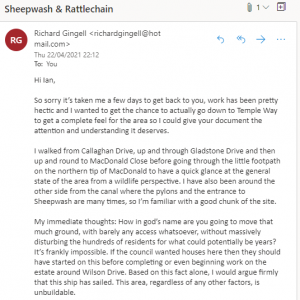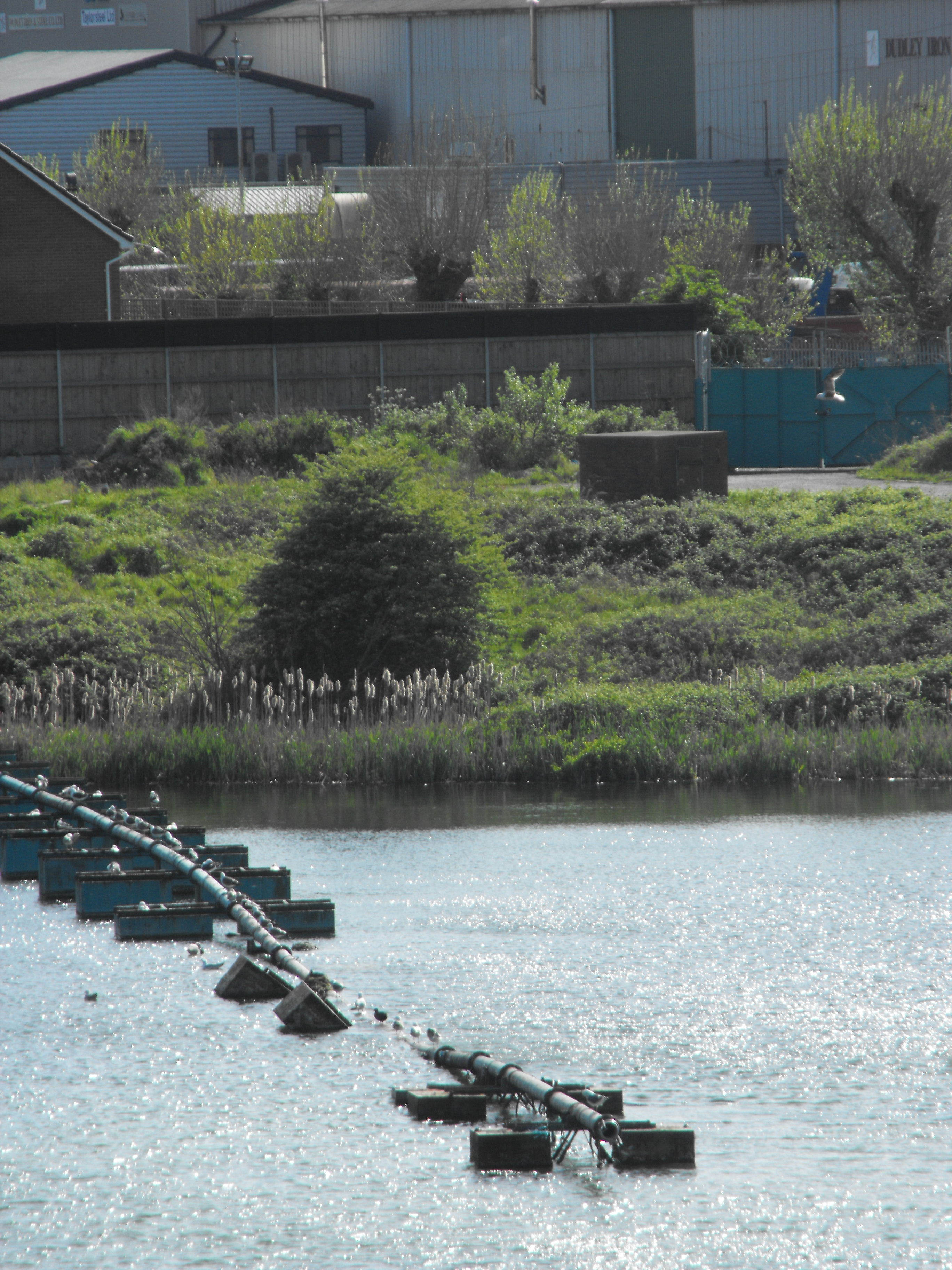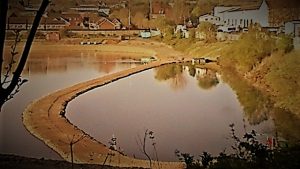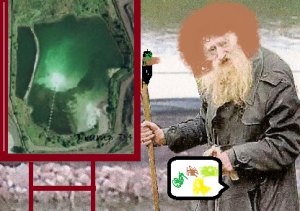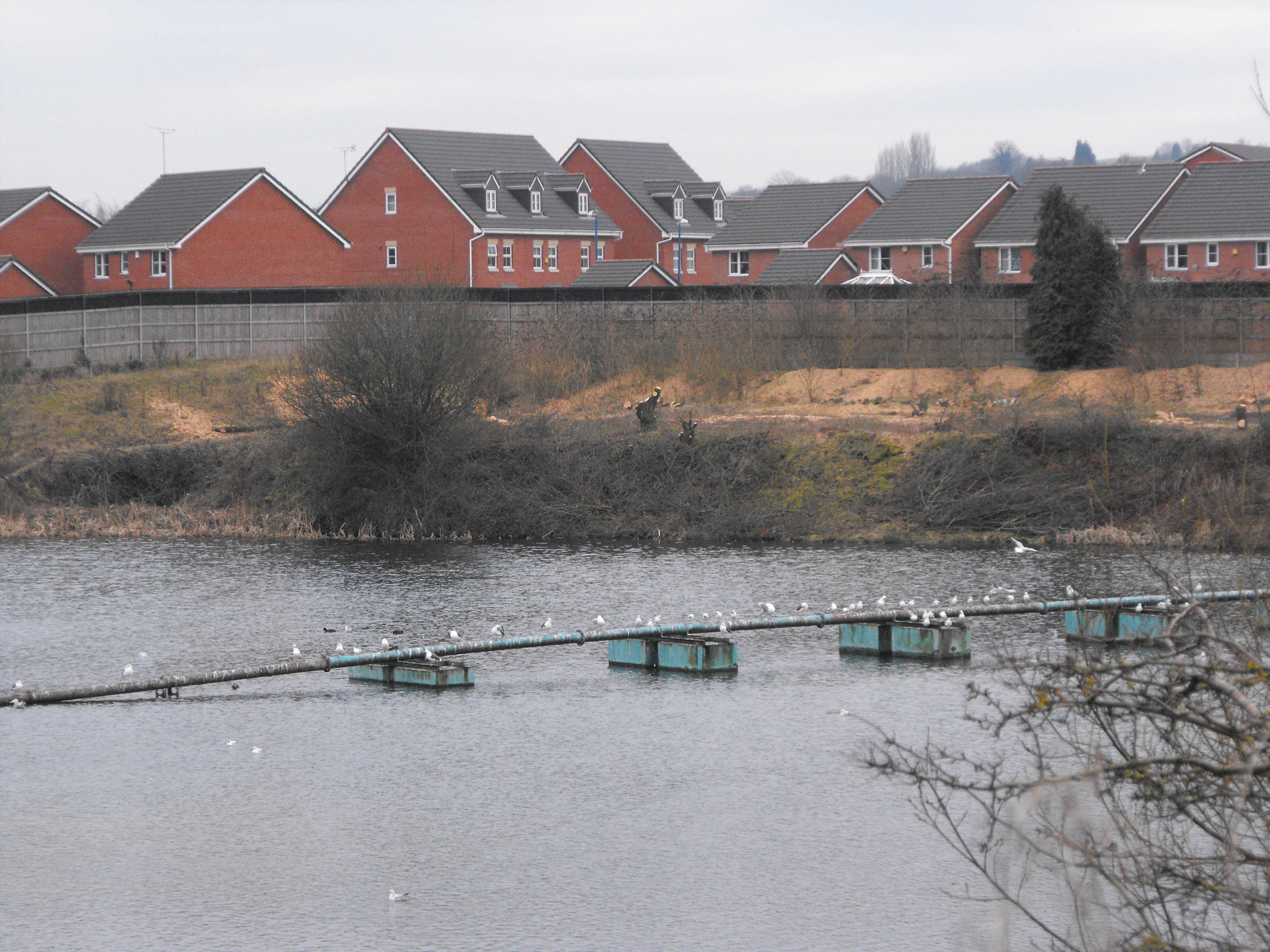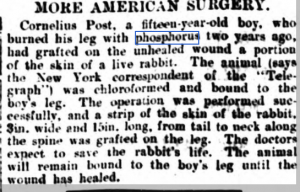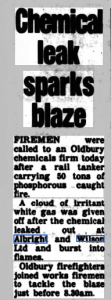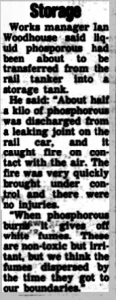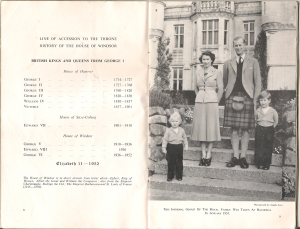Hazardous waste and dodgy old marl holes filled with liquid toxicants go hand in hand with this polluted town. Rattlechain lagoon however is not the only hazardous waste liquid dumping site , though there are no similarities between the former lagoon in Shidas Lane/Rounds Green Road in terms of the chemicals deposited in there.
The site itself started as they all appear to as a marl hole for brickwork manufacture. At this point it formed a centre point between three roads, Rounds Green Road, Portway Road, and Taylors Lane, (later renamed Shidas Lane ), and the Portway arm of The Birmingham Canal. Two brickworks appear on the 1904 map, Portway Brickworks and Little Fields brickworks.
By 1916 , the site is shown as “old clay pit” though the brickworks at Portway are also still marked.
Accles and Pollock began the manufacture of steel tubes in the town in 1901, merging with Oldbury Tube Works Company, Merimans Limited, and The Oldbury Steel Conduits Ltd nine years later. The company later became part of the Tube Investments Limited group (TI).
A & P made tubes for bicycles, ships, aircraft and scientific instruments like syringes amongst other similar items.
In 1932, a company called Metal Sections Limited was taken over by TI and transferred to A&P occupying The Paddock works which were located adjacent to this clearly waterfilled old marl hole. They would later move out of the works to set up a stand alone company.
The pictures below date from 1934 , and show the situation as it then stood, thus confirming that at this time though shown as an “old marl hole” on maps, it was really a substantial pool, though I doubt contained “water” that anyone would want to drink.
The 1938 map shows the Paddock works for the first time, along with the now renamed Shidas Lane.
Only in 1958 is the site shown as “pond” on the ordnance survey map.
As a wartime manufacturer, making gun barrels amongst other things, like Albright and Wilson, they had strong political links in the town which made them part of the business mafia that controlled it. W.W Hackett in particular was a titular figure in this company of tubular bell ends and in local politics.
To illustrate my point, this sycophantic arse licking piece from 21st May 1949 Birmingham Daily Gazette was written on his retirement from the bench, of which company he had Ken Wilson from A&W.
The types of chemicals, particularly acids that were being handled and disposed of by Accles and Pollock before waste management licensing and at The Paddock works were highly dangerous. The article below from 18th October 1957 Birmingham Daily Post shows how a worker at the site was poisoned by tricloroethylene vapour and the company found to be “negligent”
In this case, this chemical widely used as an anaesthetic was being used as a metal degreaser. Though Thomas Bell was awarded damages for his injuries, this company hired people in the medical profession if you can even call it that, to attempt to deny that he had suffered a coronary thrombosis.
It should be noted that this chemical is also a human carcinogen and occupational exposure is associated with a range of other human conditions such as Parkinson’s disease. Clearly, its effects in groundwater are also very dangerous , as would be allowing it to be discharged into the sewer network. Oh wait….. 😮
Particular concern has been shown in the US regards this chemical from industrial sources entering drinking water and poisoning people.
Of course, it was by 1977 that we get the first hint of “protection” of the environment for this dangerous chemical being used amongst others at The Paddock Works site, and an overview for how long this industrial polluter had been using the old marl hole for its foul purposes of waste disposal. This meeting of the West Midlands County Council waste disposal and licensing committee of December 22nd 1977 is known in infamy for how many dodgy licences for dodgy firms were being discussed in a single session. Included at this meeting as “contentious” licences were The Mitco Lagoon as well as Albright and Wilson’s Gower Tip, and our own Rattlechain lagoon. This was another of the contentious licences on the agenda- truly incredible how these vile shitholes all appeared in conjunction on the same radar all at once, though blind it seems to the eyes of the pillocks at the meeting.
The information gleaned for Accles and Pollocks use of the site should be taken as accurate and more authoritative than anything that can be found today. We learn that
- Accles and Pollock were discharging a “variety of waste acids” at a rate of 10,000 gallons per hour to the lagoon.
- Of this 4,000 gallons per hour were extracted and “treated” prior to discharge to sewer! The other 6,000 gallons “soaked away” and was “suspected” of soaking away into nearby mine workings!
- The licence appeared to be wanting to start a “phased withdrawal” from this operation.
- The condition 6 wanted a 3 year time limit on this.
This information is absolutely shocking in how little regard this dangerous waste was accepted to be escaping without proper scrutiny. Even more shocking is that the licence was subsequently granted to carry on regardless, despite the “contentious” aspects considered. This is just another example of the bloody imbecile Ken Harvey waste disposal officer at the time and his legacy of shame and incompetence. the next item on the agenda that day was…. SL31 Rattlechain Lagoon. 😕
I put in a Freedom of Information Request to The Environment Agency to see if they held this historic waste management licence, SL137 as well as any other relevant modifications passed after this.
The EA responded with some useful information.
A map of the historic landfill site numbered EAHLD23686 can be found HERE.
Note the Sandwell council refuse tip at Shidas Lane across the road which was also an infilled brickworks marl hole. The map of the licenced site, also confirms the area shown in the historic maps and photos above in this post.
As can be seen by the licence SL137, this is another typical example of how vague Harvey’s wording was and how anything could go. It is difficult to see how this man was anything more than a waste disposal industry bought bunged shill. That is the only conclusion that any reasonable person could come to when studying how much escaped scrutiny during this disastrous period of waste dumping in the West Midlands County and his departments systemic failures to “control” pollution.
I have set out the main points of the licence and how it was altered by subsequent modifications in the PDF below with relevant links to that within.
Shidas Lane lagoon waste management licence and modifications
one thing of concern is that the original licence condition 6 gave a three year time limit to 1981 of discharge, yet the subsequent modification gave a mealy-mouthed bypass for this without specific time limit! Of particular note however are the chemicals and their quantities being discharged into the lagoon which warrant further scrutiny and need to be highlighted clearly! John Haigh would have had a field day here down the Paddock!
Hydrochloric acid
Sulphuric acid
Nitric acid
Hydrofluoric acid
Chromic acid
As well as providing the licence, the EA also provided a data sheet on information they held, which states that the site had been being used for this purpose by Accles and Pollock since 1925. Thus it appears that the apparent “water” in this lagoon was nothing more than an acid bath.
Thus we see here that they had been unregulated for 50+ years, discharging dangerous and carcinogenic wastes into drinking water and beyond without scrutiny. Were the local health board aware of this, or was it the fact that those like the weasel Wilson family of the company controlling this aspect of civic life not that interested if it blotted their fellow industrialist and councillor mates economic interests?
More recent documents dating from the 1980’s are supplied in the form of the trade effluent discharge consent permitted by the equally disgusting environmental polluter Severn Trent Water.
THIS ALLOWED 900 CUBIC METERS TO SEWER PER DAY AT A RATE OF 11 LITRES PER SECOND.
Limits were placed on heavy metals within this mix, as well as PH between 6-12. I would argue that these were all set too high. The PH of 12 is especially a very strong alkaline.
By the 1990’s the site works had now become known as TI Apollo– and later “Apollo Sports” this referring to a brand of sporting items manufacture such as javelins.
A very detailed “working plan” of how this works operated and its interface with discharge to the lagoon, can be read HERE.
This all smacks of carefully worded theory, but as I have seen with Albright and Wilson, was the practice really as clockwork as they would like to suggest?
It appears that by now, Severn Trent had reconsidered their inappropriate limits, but I’d still argue they were too high- particularly on Chromium.
Accles and Pollock would morph into the Apollo Sports brand , and I am sure that javelin throwers and golfers would have had no idea of what crap was being dumped in order to facilitate their elite sports projectiles and clubs, but I really wonder anyhow if any of them would have even cared? 😥
As a footnote to this , and a theme that you will find regularly if you are a reader of this blog, we see a tiny number of individuals who pollute rewarded, and the victims of industrial pollution left to rot.

12th June 1989 Sandwell Evening Mail and all the shit that they didn’t want they puttered down the sewers!
The ponse in uniform in this picture was well known for digging up land himself to be infilled with mountains of waste. Lieutenant indeed for an aristocracy that buys up land in splendour for agriculture and spits out titbit crumbs of contamination for the rest of us to live amongst.
So it appears then that a very few individuals who practiced elite sports for the wealthy- particularly golf, warranted the pollution of Oldbury. There are those who claim that Oldbury is famous for “making things”. I would state that in this endeavour, through industrial processes, it is the people of Oldbury who were well and truly “shafted” as a consequence by the likes of Accles and Pollocks and the Apollo offshoot. The polluter never paid to clean up the massive bogey they left behind, and it would not be long before A&P went tits up into the rough as a company and left behind their problem toxic waste lagoon.



























